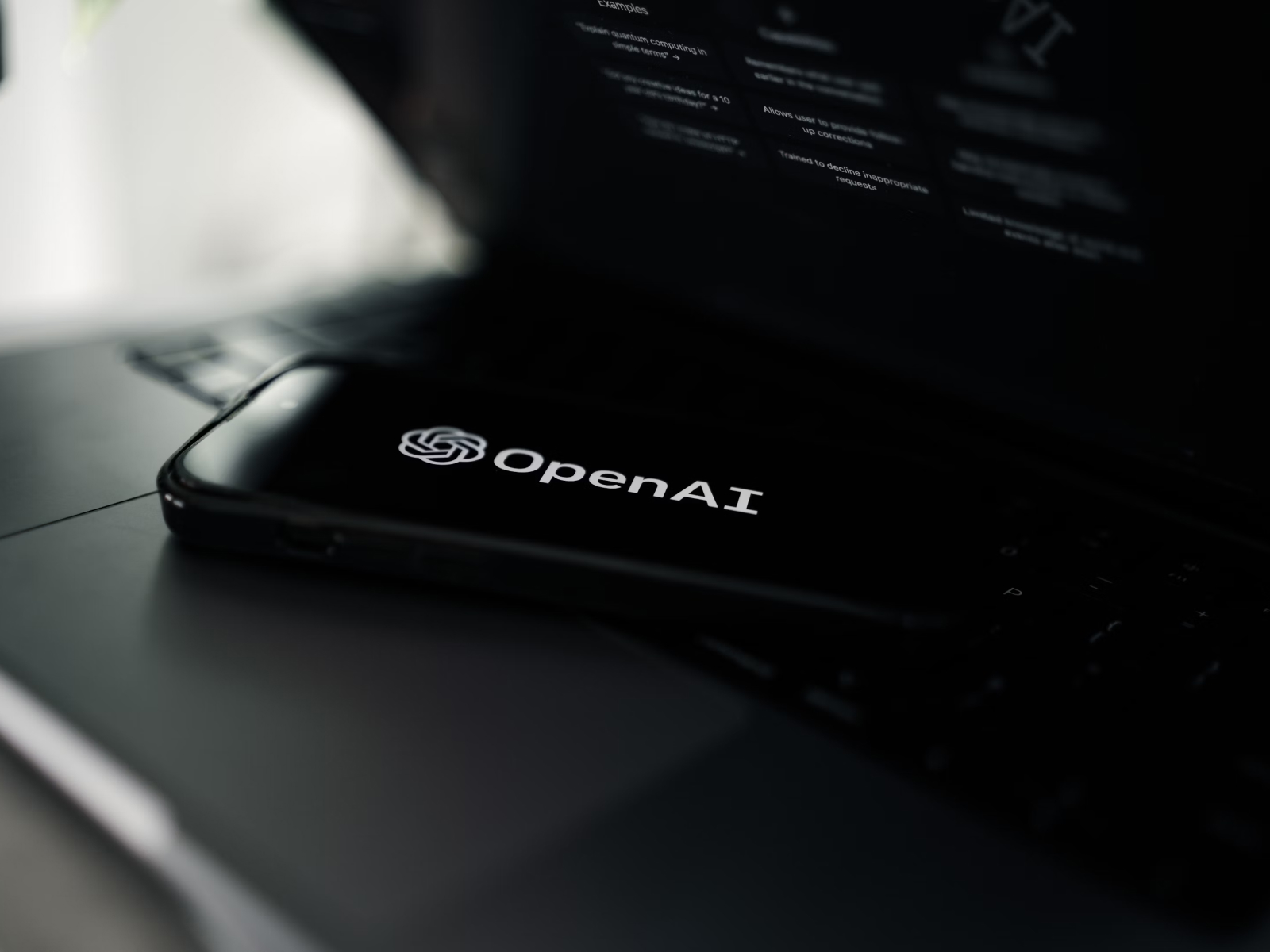OpenAI has introduced SearchGPT, an innovative AI-powered search engine designed to challenge the current dominance of Google and Perplexity in the search engine market.
SearchGPT leverages advanced AI capabilities to deliver more intuitive and user-friendly search results. At launch, SearchGPT is available as a limited prototype, providing an exclusive preview to 10,000 test users, letting OpenAI fine-tune the service based on user feedback before a broader rollout.
SearchGPT’s integration with ChatGPT is on the horizon, promising to blend conversational AI with real-time search functionality—with aims to create a more seamless user experience, whereby users can engage in natural language queries and receive organized, context-rich responses.
How SearchGPT impacts search experiences
SearchGPT starts the search process with a large, welcoming text box that prompts users with, “What are you looking for?” aiming for a more interactive experience. Unlike traditional search engines that provide a list of links, SearchGPT organizes and summarizes the information, making it easier for users to find relevant content quickly.
The AI-driven engine synthesizes data from many different sources, presenting it in a coherent and easy-to-digest format—saving the users time improving the quality of the information they receive.
Real-Life examples of SearchGPT in action
SearchGPT does well in providing detailed and practical responses. For instance, when a user searches for information on music festivals, the engine doesn’t just list websites.
Instead, it summarizes key details about the festivals, such as dates, locations, and highlights, followed by attribution links. The users can then get a quick overview and then go deeper into specific events should they choose.
When asked about planting tomatoes, SearchGPT explains the best planting times and provides information on different tomato varieties, growing conditions, and care tips.
Users can also engage further by asking follow-up questions or exploring additional links in the sidebar. Although OpenAI mentions a feature called “visual answers,” further details are yet to be disclosed, leaving room for anticipation about future features and improvements.
SearchGPT prototype access
SearchGPT uses the GPT-4 models to offer leading performance and sophisticated search capabilities. Initially, access is restricted to 10,000 test users, which helps OpenAI gather valuable feedback and refine the search engine’s functionality—a key phase for identifying potential issues and making adjustments before a full-scale launch.
The development of SearchGPT involves collaboration with third-party partners and uses direct content feeds to build its search results. The aim here is to ensure a high level of accuracy and relevance information that’s provided—the eventual goal being to integrate advanced search features directly into ChatGPT.
SearchGPT’s market entry: Challenging Google and partnering with news giants
SearchGPT’s entry into the market poses a threat to Google’s search engine dominance and challenges the promise of Google’s recently launched AI Overviews. As users seek more intelligent and context-aware search tools, Google’s strategy has been to incorporate AI features rapidly, highlighting growing competitive pressure.
Direct competition with Perplexity, another AI “answer” engine, must also be taken seriously. Perplexity has faced criticism for issues such as AI summaries allegedly plagiarizing content, along with recent accusations of them bypassing crawl restrictions.
OpenAI aims to differentiate SearchGPT by focusing on ethical collaboration with content creators and providing clear attributions.
How SearchGPT works hand-in-hand with publishers
SearchGPT collaborates with major news partners, including The Wall Street Journal, The Associated Press, and Vox Media, making sure that content creators have control over how their information is used and displayed.
Publishers can manage their presence within SearchGPT, opting out of content training while still being visible in search results. This then helps OpenAI maintain trust and transparency, both of which are key for long-term success in such a competitive industry.
SearchGPT provides clear, in-line, named attributions and links in its search responses, which help users understand the sources of information and encourage further engagement with the original content. SearchGPT cites and links to publishers to drive traffic back to the original sources, benefiting both users and content creators.
Benefits of starting with a prototype
Releasing SearchGPT as a prototype provides OpenAI with a controlled environment in which to test the AI’s capabilities and gather user feedback. Any inaccuracies in search results can be attributed to the prototype status, which gives OpenAI the opportunity to make adjustments without suffering much reputational damage.
For instance, when Google rolled out its AI Overviews and mistakenly advised users to put glue on their pizza, the prototype label mitigated the backlash.
The prototype phase also lets OpenAI identify and address potential issues with content attribution. Given the controversies surrounding Perplexity’s AI summaries, which faced allegations of plagiarism, SearchGPT’s clear attribution policies are a proactive measure to avoid similar pitfalls.
Behind SearchGPT’s journey to launch
SearchGPT’s development has been a topic of speculation and interest since early 2024. Initial rumors surfaced in February, with reports indicating that OpenAI was working on a search engine powered by its advanced AI models. As development progressed, Bloomberg provided further insights in May, publicizing the potential SearchGPT has to disrupt the search engine market.
One of the more notable strategies during this phase was OpenAI’s aggressive recruitment of talent from Google—a drive that was part of a broader effort to accelerate SearchGPT’s development and refinement.
In addition to these internal efforts, observers on platforms like X (formerly Twitter) also noticed that OpenAI has launched a new website for SearchGPT.
Real-Time Web Access
Earlier versions of ChatGPT, such as GPT-3.5, faced limitations due to outdated data, as the model was months behind current events at the time of release. To address this, OpenAI introduced a feature called Browse with Bing in September, which gave ChatGPT access to the internet for real-time information.
While this feature indicated progress, it was relatively basic compared to the capabilities promised by SearchGPT.
SearchGPT aims to build on this foundation by providing a more sophisticated and smooth integration with real-time data—giving users access to up-to-date information and receiving responses that reflect the latest developments across many different fields.
Financial and monetization challenges
Rapid advancements and a growing user base for ChatGPT came with major financial implications for OpenAI. The Information reported that the company’s AI training and inference costs could reach $7 billion this year—a staggering figure highlighting the financial pressures associated with maintaining and scaling such advanced AI services.
SearchGPT’s initial launch is free of charge and ad-free; however, the model is not sustainable in the long term. OpenAI must develop effective monetization strategies to offset these high operational costs.
Potential revenue streams could include subscription models, premium features, partnerships, and targeted advertising.
Balancing monetization with user satisfaction and ethical considerations will be key if OpenAI is to be viable in the long run. Success will depend on technological prowess and on the company’s ability to establish a sustainable and competitive business model.
Final thoughts
SearchGPT is a milestone development in the search engine space, combining real-time web integration with intelligent information summaries. While it promises to improve how users access and interact with information, lasting success will depend on how well OpenAI addresses the challenges of content attribution, user privacy, and financial sustainability.
As SearchGPT continues to evolve, it will be key to monitor its impact on both users and the broader industry, balancing innovation with ethical considerations. Adopting a nuanced approach is a must for SearchGPT to push the boundaries of technology while maintaining both trust and integrity.




